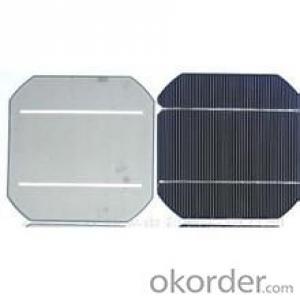The sun, a radiant orb of energy, has been the silent provider of life on our planet for eons. It’s only fitting that we harness its power to fuel our modern world. But how do we maximize this gift of sunlight? The answer lies in a technological marvel: Bifacial Solar Panels. These innovative panels are designed to capture sunlight from both sides, doubling down on the solar energy potential. Let’s dive into the world of bifacial solar technology and explore its benefits, installation, and the future of solar energy.
The Dual-Sided Advantage
Imagine a world where solar panels can absorb sunlight from both the front and the back. This is the reality with bifacial solar panels. Unlike traditional solar panels that only have photovoltaic cells on the front side, bifacial panels have a clear or semi-transparent backsheet that allows sunlight to reach the cells on the back as well. This dual-sided absorption significantly increases energy yield, especially in environments with high albedo, such as snow, water, or light-colored surfaces that reflect a lot of sunlight.
The Science Behind It
The science of bifacial solar panels is rooted in the photovoltaic effect, where light energy is converted into electrical energy. However, the real magic happens with the backside. The backsheet of a bifacial panel is designed to transmit, not absorb, sunlight. This allows the rear side to generate additional power, which can be up to 30% more than a traditional panel, depending on the environment.
Installation Considerations
When it comes to installation, bifacial solar panels require some special considerations. The panels need to be mounted at an optimal angle and spacing to ensure that the backside receives adequate sunlight. This often means using tracking systems that follow the sun’s path throughout the day, or installing the panels at a tilt that maximizes reflection from the ground. Additionally, the ground beneath the panels should have a high albedo to enhance the backside energy yield.
The Economic Impact
From an economic standpoint, bifacial solar panels offer a compelling case. The increased energy yield can lead to higher cost savings over time. Although the initial investment might be slightly higher due to the more complex manufacturing process, the long-term benefits are substantial. The panels can generate more electricity, which can offset the higher upfront cost and lead to a quicker return on investment.
Challenges and Solutions
Despite the advantages, bifacial solar panels do face some challenges. One of the main concerns is the potential for increased soiling on the backside, which can reduce efficiency. However, regular maintenance and cleaning can mitigate this issue. Additionally, advancements in materials and coatings are being developed to make the panels more resistant to dirt and grime.
The Future of Solar Energy
As we look to the future, bifacial solar panels represent a significant step forward in solar technology. With ongoing research and development, we can expect to see even more efficient and cost-effective solutions. The integration of bifacial panels with energy storage systems and smart grids will further enhance their potential, making solar energy an even more integral part of our global energy mix.
Personal Touch
I’ve always been fascinated by the idea of harnessing the power of the sun. As a child, I would stare at the sun for hours, imagining the endless possibilities it held. Now, as an adult, I’m thrilled to see the strides we’re making in solar technology. Bifacial solar panels are a testament to human ingenuity and our relentless pursuit of a cleaner, more sustainable future.
Conclusion
In conclusion, bifacial solar panels are a game-changer in the world of renewable energy. They offer increased energy yields, economic benefits, and a promising future for solar power. As we continue to innovate and refine this technology, we move closer to a world powered entirely by clean, renewable energy. The sun’s silent generosity is finally being fully appreciated and utilized through these remarkable panels.

